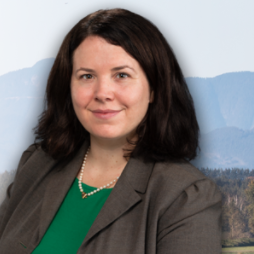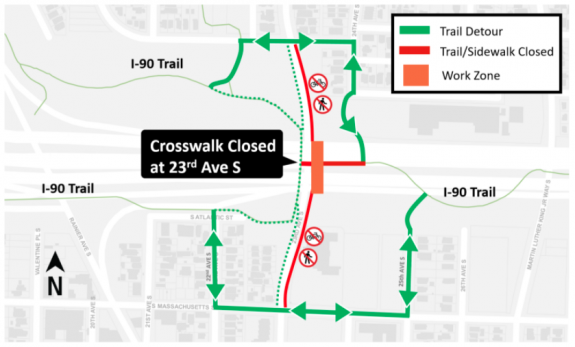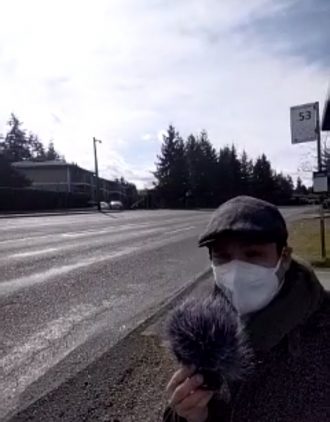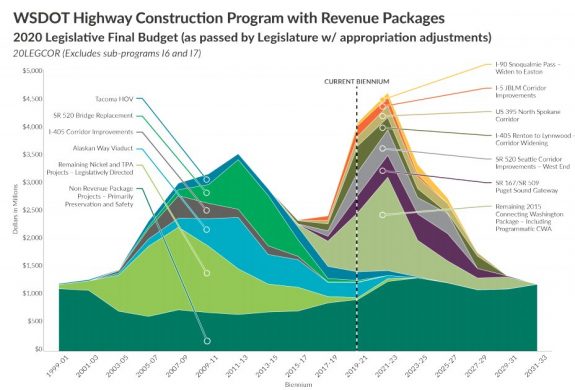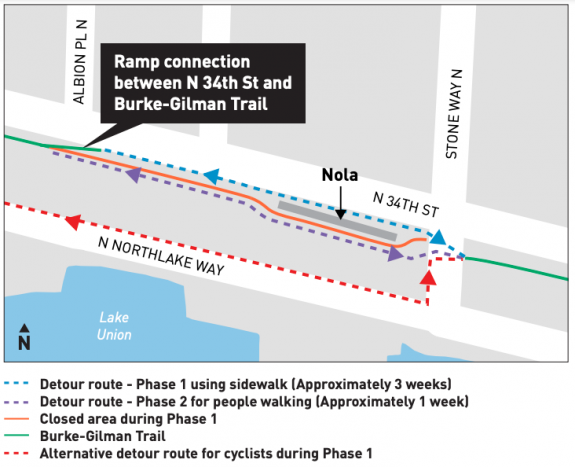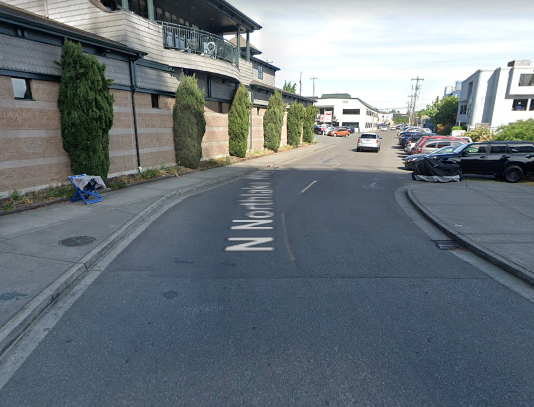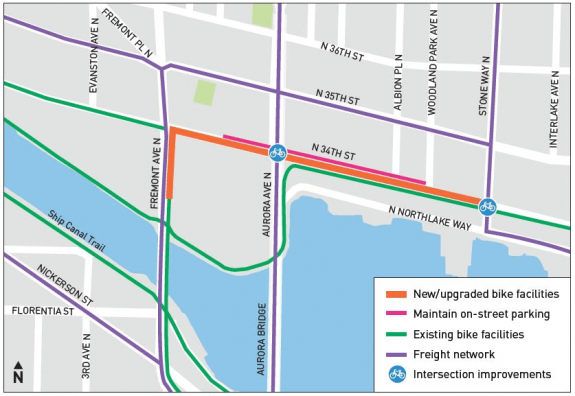Update: SDOT’s SEPA checklist listed a 2023 start date but the department has confirmed a planned construction start of Fall 2022. Good news!
In 2017, when protected bike lanes were installed in Downtown Seattle for a short stretch on Pike and Pine Streets, the city was already planning permanent replacements for those bike lanes. Since 2016, the Pike Pine Renaissance project has been in the works as a complete revamp of the entire corridor between Pike Place Market and Capitol Hill, with major streetscape changes coming alongside upgrades to the bike facilities.
The City of Seattle just completed its environmental review for the project, with the deadline to appeal the city’s Determination of Nonsignificance (DNS) now passed. The city’s submittal notes that construction is now scheduled to start in June of 2022 and complete by December 2023. The project will come in at close to $40 million dollars, coming from both the Local Improvement District (LID) created to fund the new waterfront, as well as from public benefit funding required as part of the now short-on-cash Washington State Convention Center expansion project.
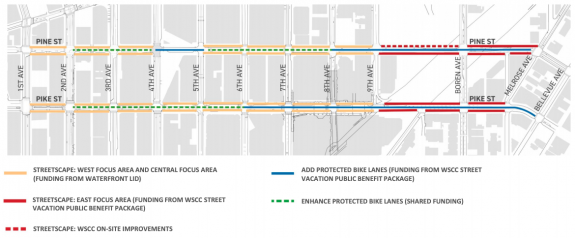
The 2017 bike lane installation on Pike Street stopped at 6th Ave; originally the City was planning to come back and bridge the gap between 6th Ave and 9th Ave, where the protected lanes the city installed in 2019 pick up. Now we know that won’t happen until the Pike Pine Renaissance is completed. What could be nearly four three more years of people biking having to navigate this gap is not great news.
As part of the project, the existing two-way segments of both Pike and Pine Street will be converted to one-way streets for motor vehicles, making the streets consistent all the way from 1st Ave to Melrose Ave. For nearly the entire length of the corridor, the bike facility is going to be maintained or upgraded, staying on the left side of each one-way street.

The exception to that is the block between 1st and 2nd Avenues, which is planned to be converted to a curbless “shared street” on both Pike and Pine. It only takes one driver to turn a shared street into a dangerous street, of course, and the removal of a protected bike lane that the city has somehow never been able to maintain on Pike Street is frustrating.
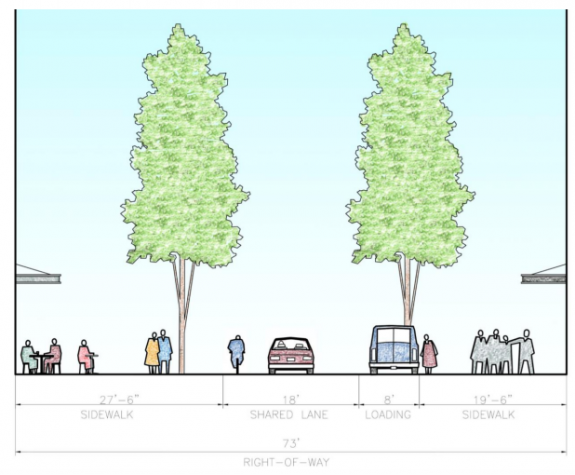

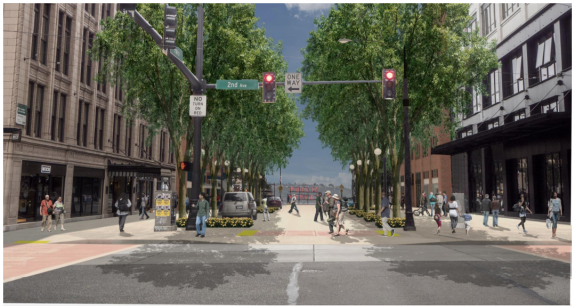
One segment of bike lane on Pine Street between 3rd and 4th Aves is planned to be raised up at sidewalk level like the PBL on 7th Avenue in Denny Triangle. The renderings show a clear attempt to activate this space near the McDonalds, long a goal of the Downtown Seattle Association, with the raised bike lane likely an attempt to slow people biking through the block; this will likely just turn frustrating in practice. Some illustrations show space for an espresso stand (like below) while others indicate space for a mobile SPD unit to be stationed.
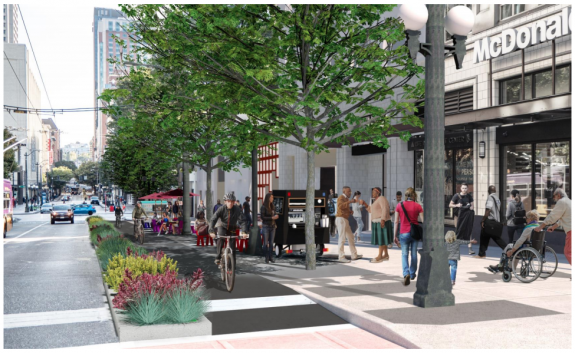
The biggest improvements will come from the segment bridging I-5. Finally people biking down Pine Street will have separated space to get through Boren Ave, where the paint bike lane disappears into a turn lane currently. Both Pike and Pine are planned for substantive sidewalk expansions here, with the protected bike lanes at street level and separated from traffic by planter boxes. If this segment works out as planned, it will be pretty transformative.
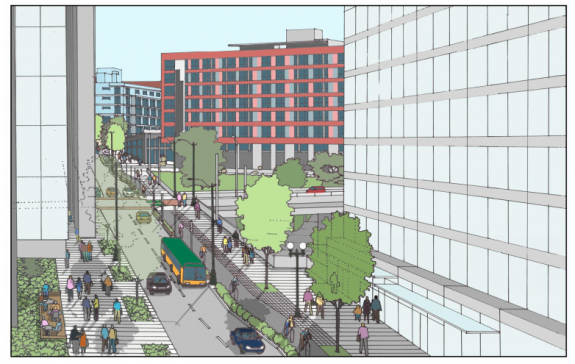
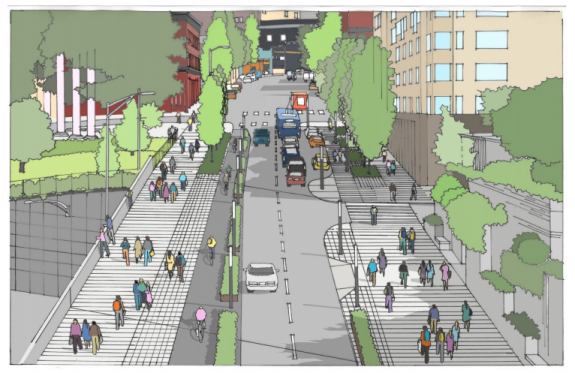
East of Bellevue Avenue, Pike Street will maintain having protected bike lanes in both directions, so the plans include a one-block two-way protected bike lane between Bellevue and Melrose to transition. Melrose Ave, getting upgrades this year as part of the Melrose Promenade project, will serve as the connector between people using Pike Street to head west on Capitol Hill to get over the Pine to head downtown.
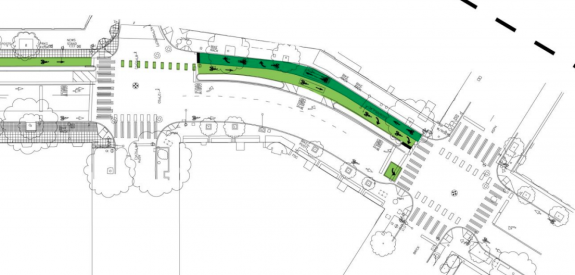
SDOT is planning a massive raised intersection at Pike and Melrose but Melrose will continue to permit vehicle traffic despite being so ripe for pedestrianization.
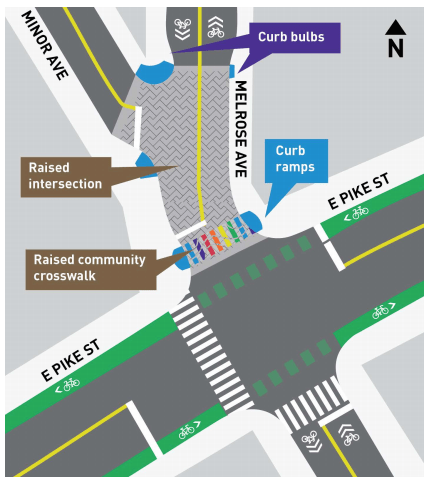
In 2021, we should get even more details on what the overall changes planned on Pike and Pine look like as the project gets to 60% design. The project has always been primarily about improving downtown streetscapes, but some big mobility improvements are coming along as well.

